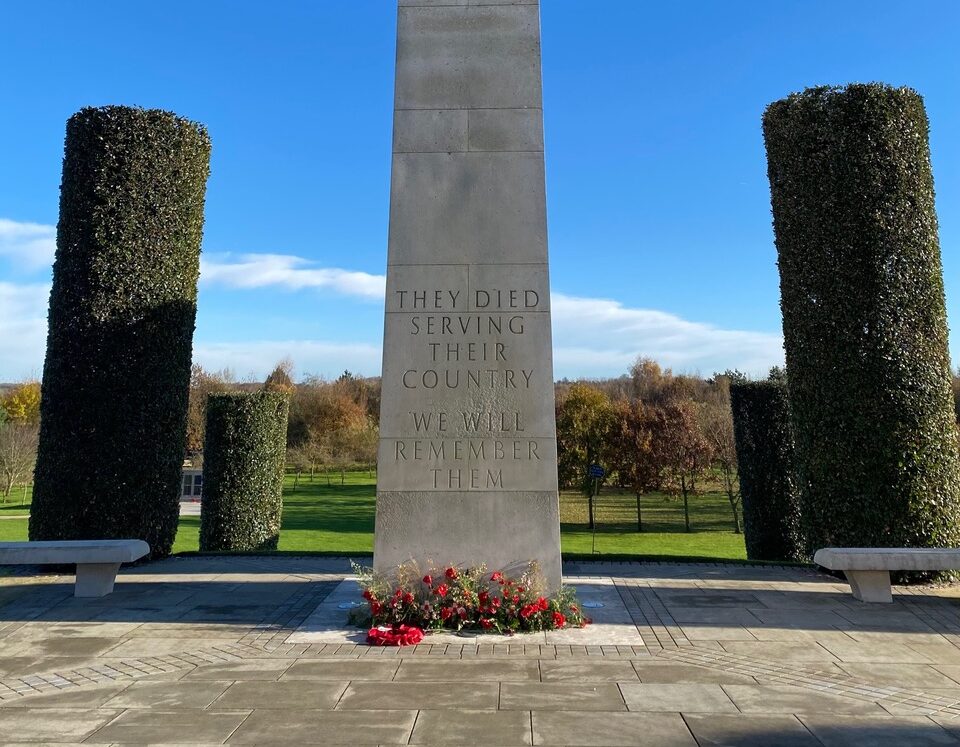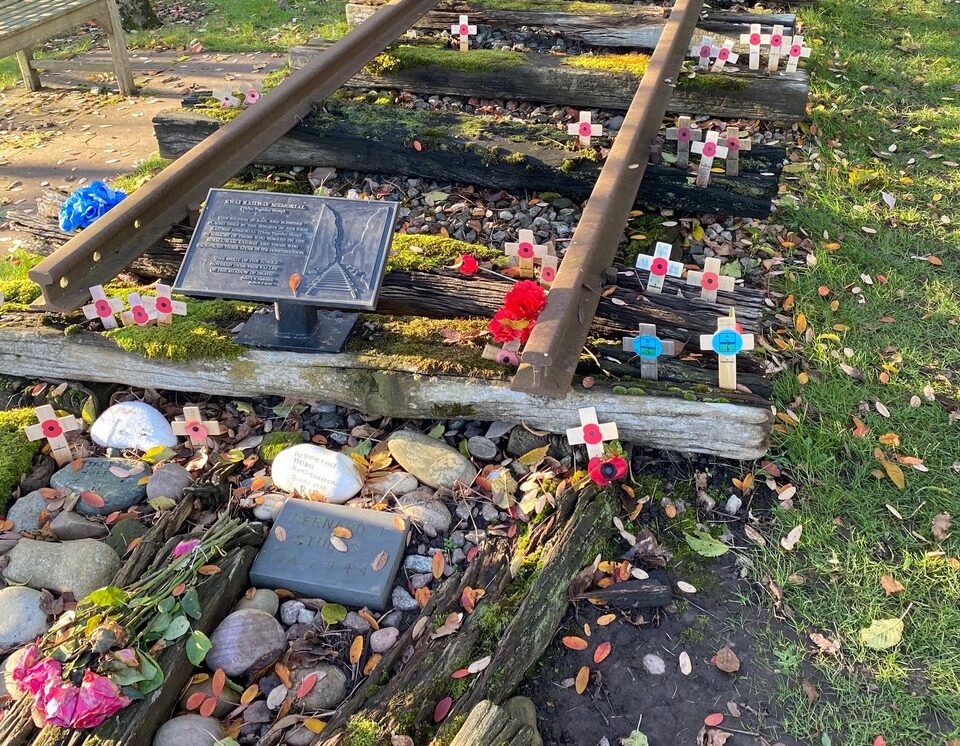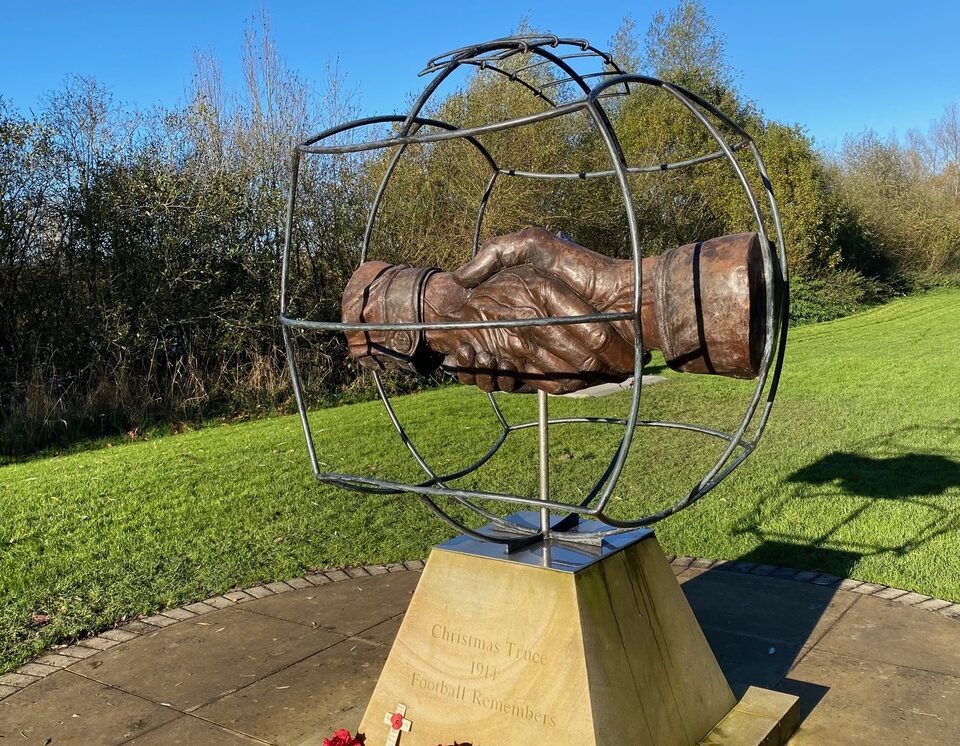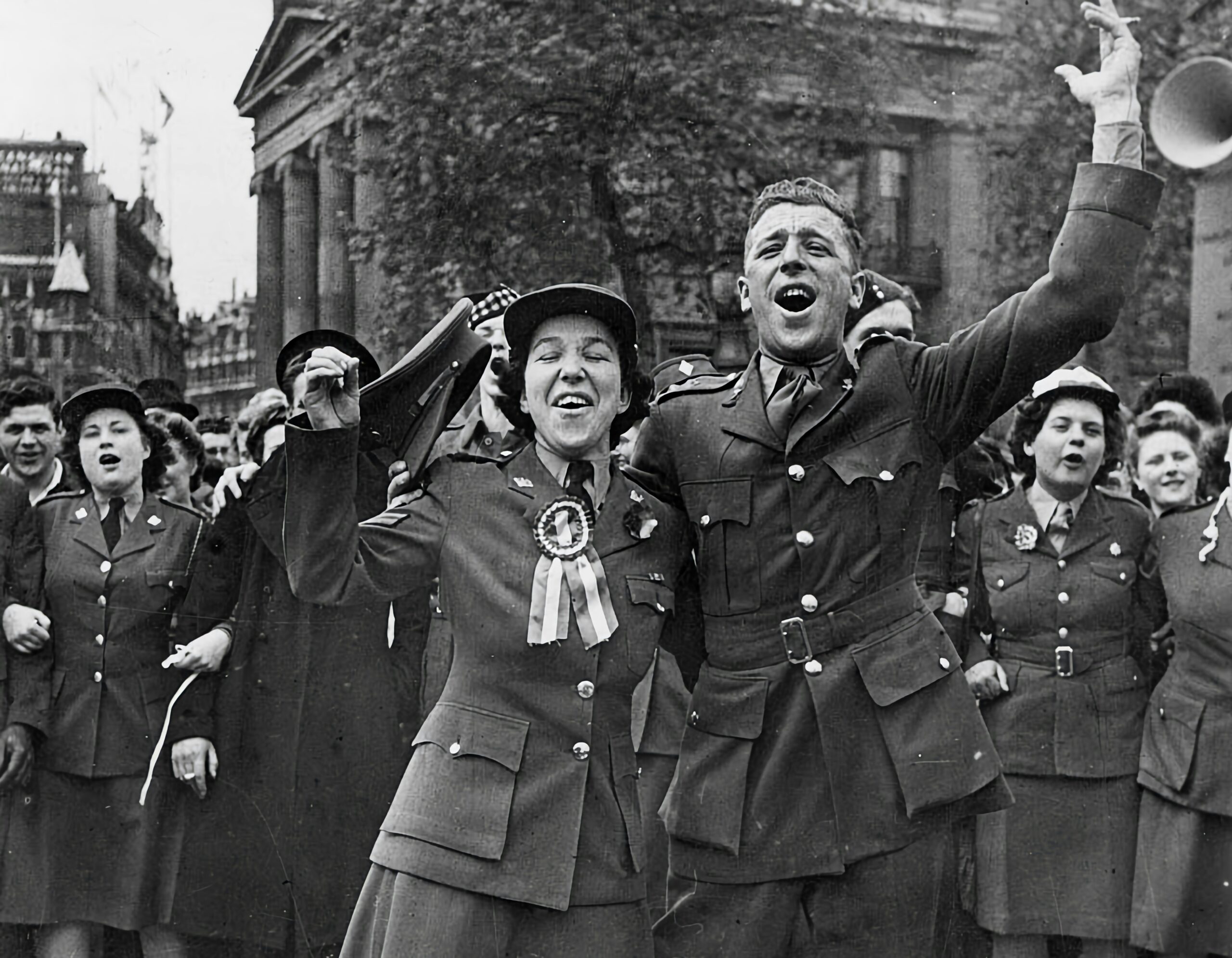A reflection to mark the 80th Anniversary of VE Day and VJ Day by Eley McAinsh, our communications officer.
4 May 2025
Beacons of peace
Tomorrow, 5 May, sees the start of four days of local, national and international events to mark the 80th anniversary of VE Day. The focus will be on remembering the sacrifice of the millions of people who fought, served and died in World War II and on celebrating the peace that most, though not all, of Europe has enjoyed since.
From ceremonies and flypasts, to cathedral services, concerts and processions, to exhibitions, street parties and the return of thousands of ceramic poppies to the Tower of London, this week is perhaps the last national opportunity we have to honour a generation that showed such extraordinary courage and resilience.
Events culminate on Thursday with a 1.00 pm service at Westminster Abbey and a concert in Horseguards Parade.
At 2.00 pm the Royal British Legion will hold a special veterans’ tea party at the National Memorial Arboretum in Staffordshire, followed by a commemorative service at 4.00 pm.
Pipers will play the specially composed ‘Celebratum’ from the top of the UK’s four highest peaks, and cathedral and church bells will ring out across the land. At 9.30 pm over one thousand beacons and hundreds of Lamp Lights of Peace will shine throughout the United Kingdom, Channel Islands and the Isle of Man, representing the ‘light of peace’ that emerged from the appalling darkness of war.
Later, on 15 August, as an integral and not-to-be forgotten part of this year’s 80th anniversary commemorations, a further service will take place at the Arboretum to mark VJ Day when, in partnership with the government, the Royal British Legion will lead the nation in honouring and remembering those who fought and died during the Pacific theatre of the war.

The focus will be on remembering the sacrifice of the millions of people who fought, served and died in World War II.
Outstanding courage
Television coverage of an earlier VE Day anniversary also featured the National Memorial Arboretum and watching at home, I was particularly moved by one of the memorials singled out – a section of track from the infamous Burma/Thailand Railway, known as the ‘Railway of Death’.
A few years ago I had the privilege of helping a friend’s father-in-law write his memoirs. Peter Michael Maddock Pritchard had served as young army medical officer behind enemy lines in Burma as part of the Second Chindit Expedition in 1944. He survived and went on to a distinguished medical career, both locally and internationally. But his account of his experiences and the suffering and deprivation that both Allied soldiers and local tribal communities experienced at the hands of the Japanese remains vivid in my mind.
Peter described one incident when their makeshift base, a clearing known as Broadway, came under attack while he and his detachment were out on patrol deep in the jungle:
Broadway was expecting a Japanese attack, and sure enough, it came when we were far away. But the Burmese Scouts were expert trackers. The Scouts noticed that Japanese patrols had marked trees to show their attack route and changed the markings to lure the Japanese across the open airstrip where they suffered severe casualties. But the Japanese had a British prisoner of war with them and used him as a human shield, hoping to confuse the Broadway sentries. With great courage the POW shouted out the truth, and somehow survived. The Broadway perimeter was breached for a while, but soon the attackers retreated, taking their casualties with them… I remember to this day the outstanding courage of my colleague Dr R.A.B. Kinloch, in treating casualties under fire.

I was particularly moved by one of the memorials singled out – a section of track from the infamous Burma/Thailand Railway.
A living landscape
So, intrigued by what I had seen on the television and in honour of Peter, one cold, cloudless day last November, I set off to the Arboretum to see the Burma Railway Memorial for myself. Other than those 30 metres of railway track, I had no idea what to expect. What I found was a stunningly beautiful, immaculately maintained site hosting over 400 memorials and 25,000 trees. Described as a ‘150 acre living landscape’, planting only began in 1996, on the site of an old quarry. Officially opened in 2001 the Arboretum now attracts over 300,000 visitors a year.
At its heart is the Millennium chapel of peace and forgiveness, the only place in the country where the act of remembrance is observed daily, welcoming people of all faiths and none to share in a moment of reflection and remember the sacrifice of those who have given their lives in the service of their country.
From the dramatic Armed Forces Memorial, designed by Liam O’Connor and inspired in part by the ancient landscapes of prehistoric Britain, to the brightly painted carousel horse of the Showmen’s Guild of Great Britain, the hundreds of memorials pay tribute to members not only of the armed forces, but of the emergency services and civilian organisations.
I took the long way round, only coming to the Burma Railway Memorial towards the end. It’s a permanent tribute to the 16,000 sick, malnourished and abused prisoners of war and 100,000 labourers who were forced to construct the ‘Railway of Death’ that ran for 258 miles between Bangkok, Thailand and Rangoon, Burma.
In bright winter sunshine, strewn with flowers, it’s almost impossible to imagine the suffering buried deep in the rusty rails and moss-covered sleepers, and yet it still speaks powerfully – and soberingly – across the years, of both the horror and cruelty of war and the possibility of healing and peace.

The National Memorial Arboretum embodies not just the hope but the possibility of peace, reconciliation and healing.
Peace and reconciliation
That small section of railway track does in miniature what the Arboretum does as whole.
Transcending the brokenness and suffering represented in every single one of the 400+ memorials, this living landscape, flourishing on the site of an old industrial quarry, nurturing hundreds of species of trees, sustaining a vibrant ecosystem, and offering its thousands of visitors a place of solace and connection, the National Memorial Arboretum embodies not just the hope but the possibility of peace, reconciliation and healing; a possibility reflected in this statement from The Very Revd Jo Kelly-Moore, chair of the Association of English Cathedrals and the Dean of St Albans:
On 8 May cathedral bells around our nation will ring out as we mark the 80th anniversary of VE Day and give thanks for those who offered their service, and many their lives, that we might know peace. As we gather in prayer in our cathedrals and places of worship on that special anniversary, the bells that ring out are also a call to us to renew our commitment, people of all faiths and none, to work for peace in our communities and in God’s world.

